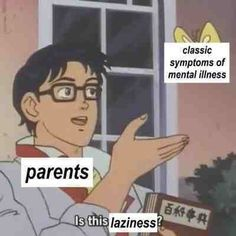Parents and Mental Health Discussions
In many Indian households, the big hush-hush topic is mental health, especially when it comes to teenagers and young adults. In a video about the issue, one of Instagram’s favorite content creators, Kareema Barry, brings up common remarks that Indian parents are infamous for making. When you’re in tears laughing about the fathers’ “Beta exercise and everything will be okay, just go for a walk” comment, somewhere in the 1-minute, thirty seconds long video, you’ll realize – I’ve heard all this before. And it’s not healthy. Or funny. It’s a disturbing and painful reality you can locate in most Indian households.
Our country has the largest youth population, a staggering 356 million, but the subject of mental health doesn’t get enough attention in India, with the focus even lower on children. The National Mental Health Survey of India (2015-2016) had estimated that nearly 7.3 percent of Indian adolescents (13-17 years) suffer from mental health problems.

Why is there a lack of conversation?
Indian society adopted one question as their favorite decades ago, and although the calendar now reads 2021, it still remains- “log kya kahenge?” (what will people say?)
For the youth, peer pressure, fear of a lack of confidentiality, and lack of awareness are major problems. Aditi, 16, talking about her experience with a therapist, says, “I disclosed a lot of my problems to them, of course. I figured that there would be a certain degree of confidentiality between the two of us, and I was wrong. They pretty much told my parents everything. There’s a reason I don’t have these conversations with my parents, and if I can’t find my safe space with professionals who are supposed to help me, then what am I expected to do?”
In a study on the perceived barriers to seeking help, it was found that a fear of a violation of confidentiality stems from the concern of stigma and embarrassment should peers and family find out what problems the young person is dealing with.

Shreya, 17, says, “I did try to talk to my parents. There was a lot of anxiety that I was dealing with – being a teenager going through a global pandemic, giving my boards this year. I couldn’t sleep. I didn’t want to eat. I wanted to see a professional. But, they (parents) just said that I should talk to them about my feelings and use my phone less as if everything would be fine by doing just that. I didn’t bring it up again. What is the point?”
In an interview with the Tempest, leading counseling psychologist and author, Rachana Awatramani states, “During our parents’ generation there was no access to Google nor were there platforms where people could share and speak about their challenges. Furthermore, mental health was never important. The entire focus was always on physical health.” In an ideal world, initiating empathetic conversations surrounding mental health is an important step towards making this topic a more comfortable one, but the reality is quite different.
Various factors can affect the take up of help – a desire to resolve the problems themselves; a lack of acknowledgment and agreement that a problem exists; a fear of being teased and stigmatized. And most importantly, a belief that nothing can be done.
Lack of Autonomy
Fewer than 10% of young Indians have access to formal mental health services, highlighting a pressing need to recognize innovative tactics to promote mental health for this age group nationwide and in low-income and middle-income countries in general. MHCA (Mental Healthcare Act) 2017 places nearly the entire responsibility for health-care decisions for minors on the NR, i.e., the parent/legal guardian unless otherwise specified. This indicates that even older adolescents cannot play an active role in their own healthcare decisions. This seems entirely at odds with the understanding of adolescent development and adolescents’ capacity to comprehend their healthcare requirements and make rational decisions.
Institutions play an indispensable role in the development of adolescents and provide scope for intervention. Family as an institution continues to play a substantial role in influencing adolescents across all sections of society in India. Parental support and healthy parenting have been recognized as contributors to better mental health outcomes and reduced help-seeking barriers in their children. Sensitization and preparation of teachers and counselors to manage adolescent mental health concerns can further aid in the early identification of mental health problems.

Conclusion
There is a shortage of mental health professionals, particularly community-based professionals. India does not have an urban-centric homogenous population; detection rates and help-seeking behavior are low, especially in rural areas. This is further compounded by high stigma and the lack of easily accessible mental health care. Thus many people do not receive the care they need, resulting in a startling treatment gap of nearly 80-90% for mental illness in India.
The youth’s mental health should be considered and treated as a shared responsibility, one where the stakeholders understand the relevance of ensuring their future well-being. In a country as big as ours, we need a public health approach to awareness, one where households can be made aware of the prevailing problems, their gravity, and steps to take.
Featured Graphic Designer: Anshika Maria
Author

